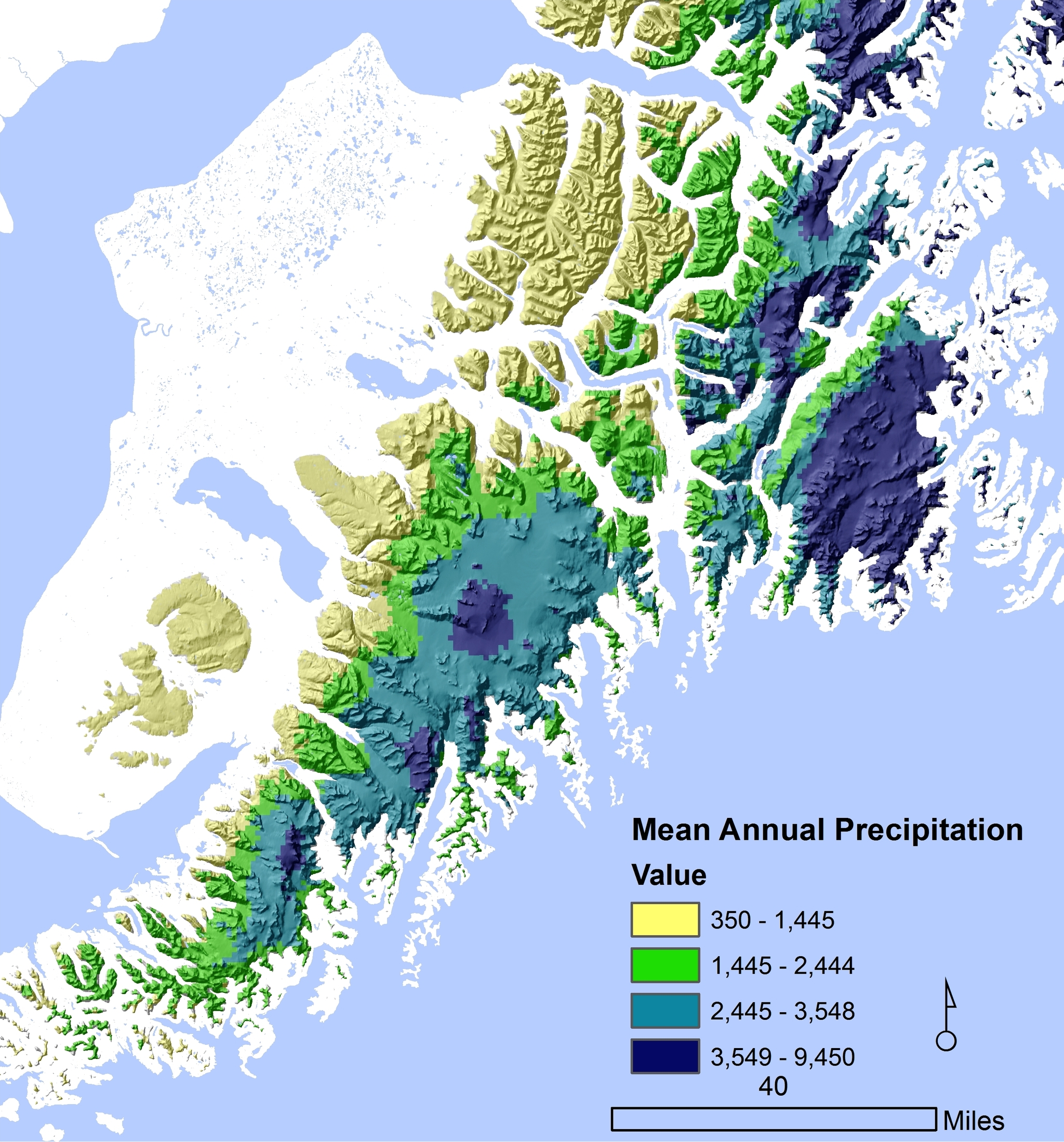The Kenai National Wildlife Refuge is often described as “Alaska in miniature” because of the variety of habitats that occur here. On the Kenai Peninsula, we live where two biomes meet. The eastern half of the Kenai Mountains has a climate similar to the temperate rainforest that spans the Oregon Coast and rainy Southeast Alaska, finally reaching its northwestern limit here. On the eastern side, rubber boots are needed to protect soggy feet.
On the western side, the Kenai Mountains mark the southern extent of the boreal forest. The boreal forest is described as the crown of the continent because it forms a green band below the Arctic that extends fully across Canada into Alaska. This side is drier, with colder winters and warmer summers.
Our mountain habitats are diverse because of the climate gradients that occur as the temperate rainforest and boreal forest biomes mingle. Additionally, because we live on a peninsula that juts into the Gulf of Alaska, our mountains create rain shadows. Rain shadows occur when prevailing winds blow across the ocean and up a mountain slope. As the moist air moves upward in elevation, the air cools and condenses into precipitation. Once over the mountain top, the now dry air descends and is warmed causing that side of the mountain have a warmer and drier environment.
The topographic diversity in the Kenai Mountains also contributes to the diversity of habitats. The highest peaks are over 6,600 feet. Uplift from tectonic plates and glacial scouring carved out our mountain landscape. Depending on the aspect, elevation, and shading from surrounding peaks, different locations get more— or less —warmth from the sun.
Ice fields occur at high elevations and give way to alpine tundra that is the dominant vegetation type above 3000 feet. Forests generally do not form above 1500 feet. In the zone between tundra and forest, a complex matrix of shrubs, tundra and stunted mountain hemlock fills the available microhabitats.
On average, the Kenai Peninsula is warmer than it was in the past. All across Alaska, trees and shrubs have been documented growing at higher elevations where it was too cold for them to survive or germinate in the recent past.
Roman Dial, a professor at Alaska Pacific University in Anchorage, has published studies that document how a warming climate is changing the alpine habitats in the Kenai Mountains. Dr. Dial has measured shrub habitats moving upward at a pace of 92 feet per decade since the 1950s, which almost keeps pace with his calculations of the velocity that climate conditions are changing. In other words, the growing season temperatures in the mountains today would be similar to the temperatures experienced about a topographic map contour lower just 10 years ago.
Trees are also moving upward in elevation, but at the slower pace of 36 feet per decade and mostly on North-facing slopes. Mountain hemlock and white spruce are colonizing alpine tundra at higher elevations, but depend on both warmer temperatures and enough water for their seeds to germinate and grow. Northern aspects are more likely to have enough moisture.
At elevation below tree-line, the mosaic of habitats is becoming woodier too. Alpine patches are filling in with shrubs. Open woodland and shrubby areas are transitioning to forests.
In the summer, I enjoy hiking up into the alpine. I like the vistas. I also like to imagine where seeds of spruce and hemlock may germinate in the future.
Dr. Dawn Robin Magness is a landscape ecologist and Fish &Wildlife Biologist at the Kenai National Wildlife Refuge. Find more information athttp://www.fws.gov/refuge/kenai/ or http://www.facebook.com/kenainationalwildliferefuge.

